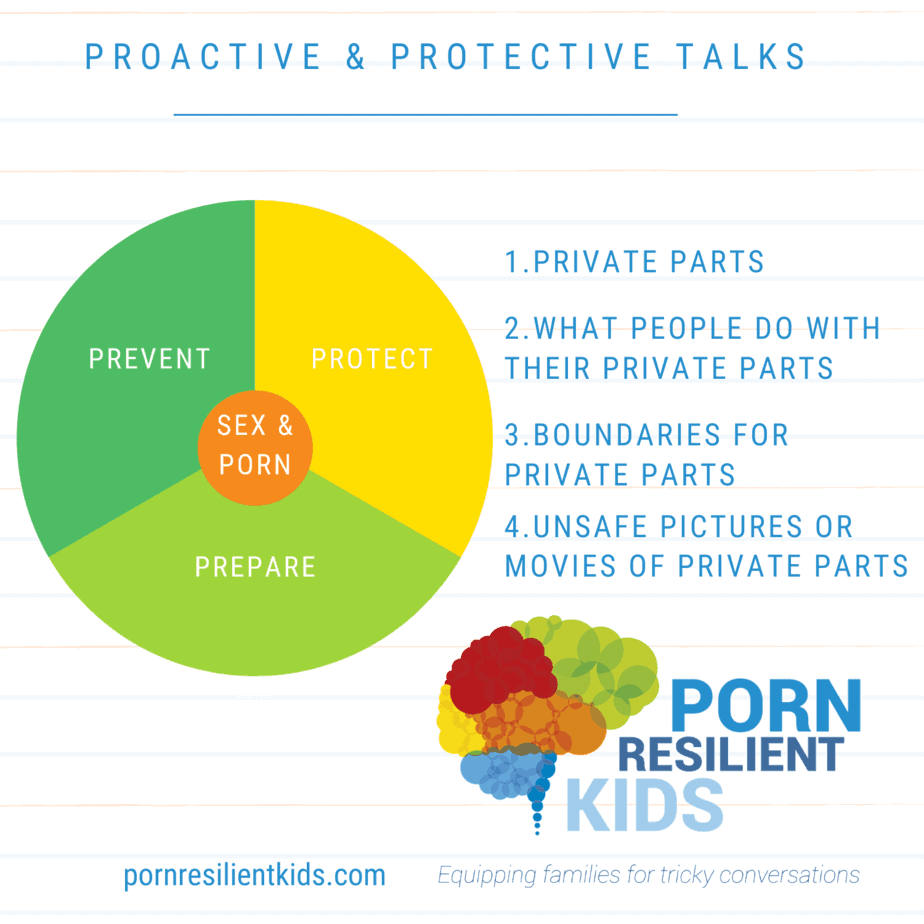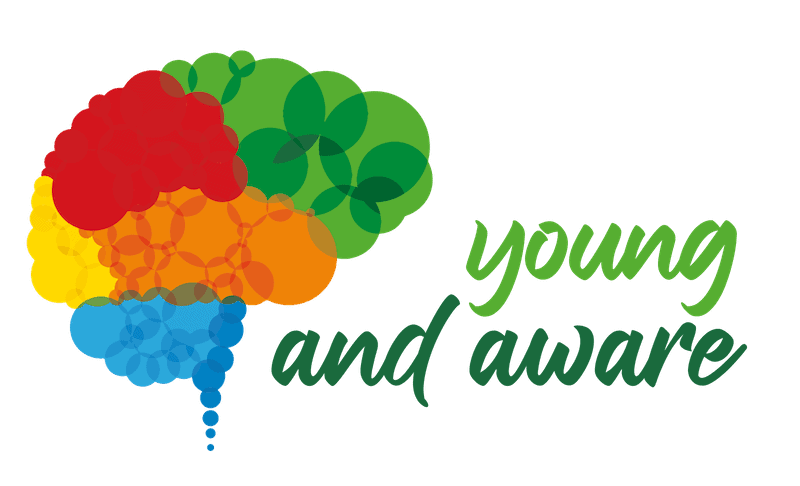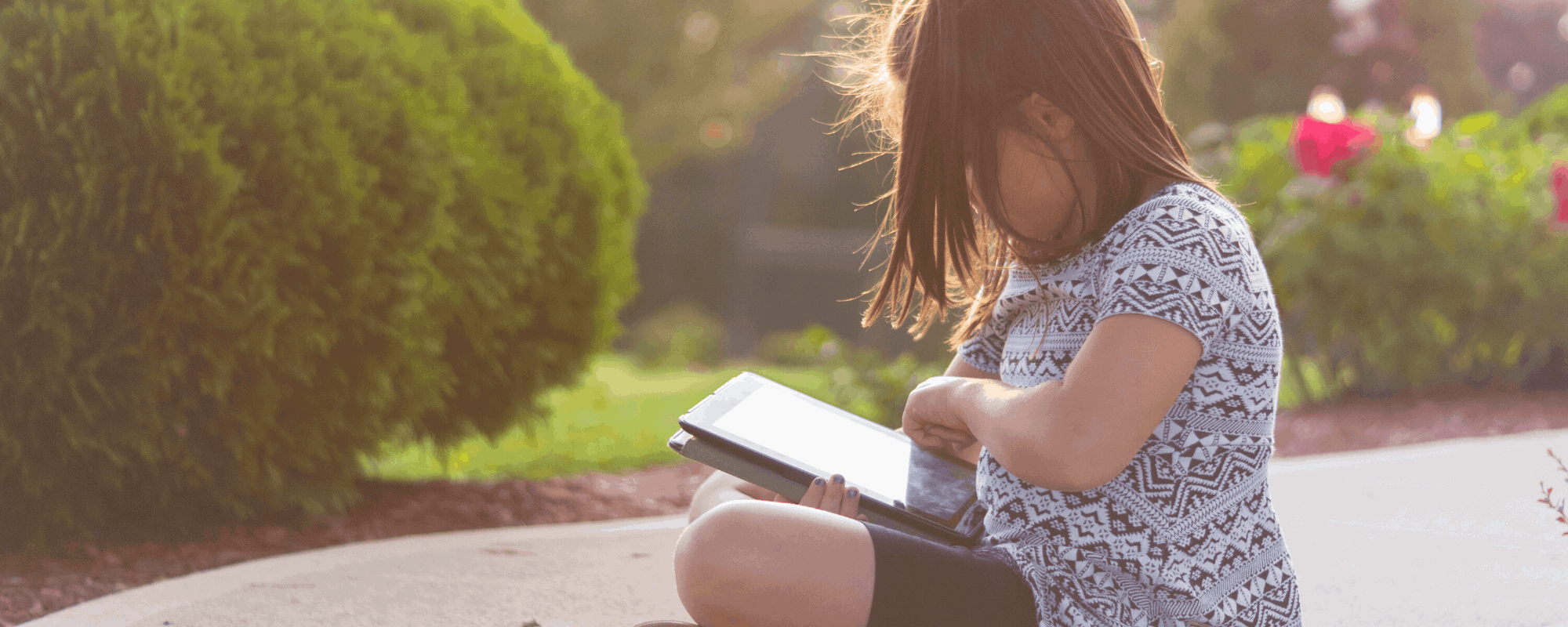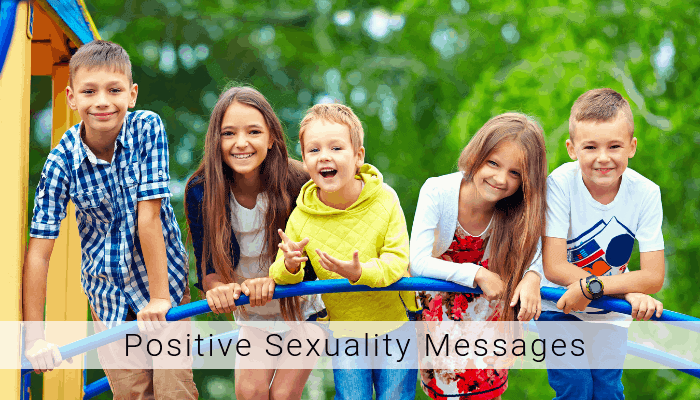Getting started with the “p” talk doesn’t have to be difficult. Yet countless parents are daunted by the thought of having conversations about sex or porn with their younger children. It’s completely normal to be anxious about the “p” word if you are starting from scratch. However, just be sure that anxiety doesn’t stop you from getting started.
Unfortunately, with the proliferation of online porn, kids are showing other kids hardcore violent porn as young as age 6 or 7, with these probabilities increasing the older they get. “Keep them innocent” translates to “making them vulnerable” to the stories that porn tells them, with little or no clue of how to implement safety responses or boundaries when a peer bursts their “innocence bubble” by talking about, showing, or in extreme cases, copying what they’ve seen online, and engaging in child-on-child sexually abusive behaviours. Yes, it’s confronting—but now more than ever, it’s essential to prepare kids for the world they are navigating.
In an ideal world (which of course, parenting is not!), it’s helpful to talk about sex and porn well before the age of 8 (a commonly used phrase at Young and Aware is “eight is too late”). Sex is not something to protect them from—predators and distorted representations of sex (porn) is what they need protection from. And by “protect”, we mean that beyond filters, the best form of protection is knowledge so that they develop their own internal filter.
For some parents and caregivers, these conversations will start with challenging personal hang-ups or working through past negative experiences. Becoming informed and comfortable with tricky topics is essential for the sake of keeping our beautiful kids safe.

We suggest starting with ensuring your child knows all the correct anatomical names for body parts. From there, it’s a much easier progression to speak with them about what people do with those private parts. Depending on the age, this may include more information than “penis in vagina” sex.
Then move onto protective behaviour education—giving them permission to voice their personal safety boundaries. This includes teaching kids that they are the boss of their body, providing them with skills to know what to do if someone tries to (or does) touch them inappropriately, and discussing who their safe “go-to” people are if they find themselves in a tricky situation or just need to talk. With all the foundational concepts in place, it’s then much easier to talk about porn – or for younger children, unsafe pictures or movies. And as illustrated by the Young and Aware logo, we can also teach our kids about the ways pornography can negatively impact the brain.
We are not a fan of using the language “good or bad” pictures or movies at Young and Aware. This is because “bad” pictures can sometimes make a child feel “good”—children can be aroused by pornography at a very young age—hence, the “good and bad” terminology may be confusing. Our caution in using this language is in no way intended to minimise the effectiveness of the much-loved children’s book Good Pictures Bad Pictures. This exceptional resource (and the Jr. version) are books that we recommend. If you’ve read these to your child, parents could use the difference between “good and bad” and “safe and unsafe” as another opportunity for conversation.
There’s an extensive list of resources to help you with these conversations on the Young and Aware website, including great books on body safety. Protective Behaviours video training by Holly-ann Martin from Safe 4 Kids (and other books and resources) are a brilliant place to start. Cath Hakanson from Sex Ed Rescue and Jayneen Sanders at Educate2Empower Publishing also offer great strategies and resources. Or, if you are looking for parent coaching (particularly to work through personal obstacles preventing you from having these conversations), Anya Manes from Talking about Sex offers a wealth of support and resources.
The odds of kids in the playground oversharing or showing your child porn, or perhaps them stumbling across it by accident, increase the more that they spend time away from your watchful eye. Silence breeds vulnerability. Whereas, getting started with the “p” talk and preparing your kids in advance for inevitable exposure to porn, provides them with the necessary knowledge and skills so that they become aware of porn harm.
If you are in Australia and need help with a cyber safety issue, the eSafety Commissioner can help. eSafety can investigate cyberbullying of children, adult cyber abuse, image-based abuse (sharing, or threatening to share, intimate images without the consent of the person shown) and illegal and restricted content. Report online harm here.
Report concerns to the Australian Center to Counter Child Exploitation (ACCCE) about inappropriate behaviour towards children that you find online. This service can be used to report:
- Suspected online grooming or unwanted contact.
- An individual having a conversation with a child online and saying and doing inappropriate things or trying to meet in person.
- Live streaming and consuming child sexual abuse material.
- Coercing and blackmailing children for sexual purposes.




